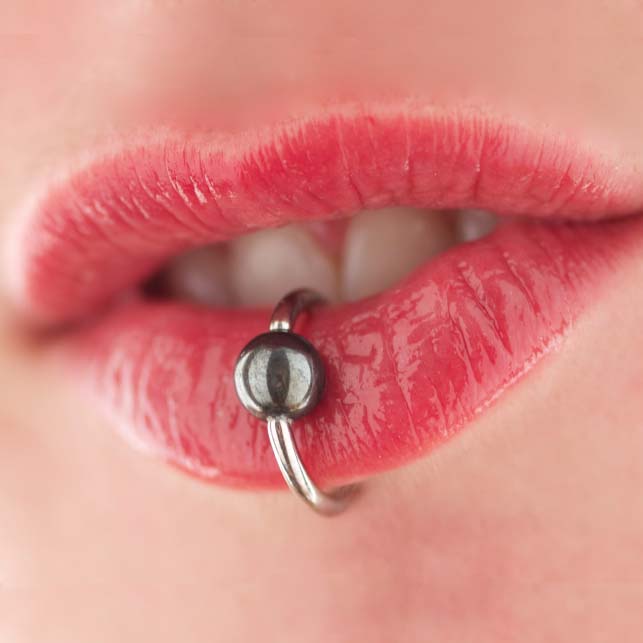
Growing popularity of People with Piercing in the West
Body piercings become more and more popular and many people have more than one piercings, navel, nipple, cartilage, septum, dermal and so on, but before, body piercings are not so common and allowed.
By the early part of the 20th century, piercing of any body part had become uncommon in the West.After World War II, it began increasing in popularity among the gay male subculture. Even ear piercing for a time was culturally unacceptable for women, but that relatively common form of piercing began growing in popularity from the 1960s.In the 1970s, piercing began to expand, as the punk movement embraced it, featuring nontraditional adornment such as safety pins; and Fakir Musafar began popularizing it as a form of Modern Primitivism, which incorporated piercing elements from other cultures, such as stretching.

Body piercing was also heavily popularized in the United States by a group of Californians including Doug Malloy and Jim Ward, who is regarded as "the founding father of modern body piercing". In 1975, Ward opened a home-based piercing business in West Hollywood, which was followed in 1978 by the opening of Gauntlet Enterprises, "the first professional body piercing specialty studio in America." From it, Ward distributed the pamphlet which Malloy had written and Ward illustrated, disseminating much misinformation but stimulating interest in more exotic piercings. As word of body piercing spread to the wider community, Ward, Malloy and Musafar collaborated on launching the first publication dedicated to the subject, PFIQ.

A significant development in body piercing in England occurred in 1987, when during Operation Spanner, a group of homosexuals—including well known body piercer Alan Oversby—were convicted of assault for their involvement in consensual sadomasochism over a 10-year period, including acts of body piercing. The courts declared that decorative body piercing was not illegal, but that erotic body piercing was.Subsequently, the group Countdown on Spanner formed in 1992 in protest. The group appealed the decision before the High Court of Justice, the House of Lords and finally the European Commission of Human Rights, attempting to overturn the verdict which ruled consent immaterial in acts of sadomasochism, without success.In spite of their repeated failures, the situation publicized the issue, with The Times editorializing the court's decision as "illiberal nonsense" in 1993.
Body modification in general became more popular in the United States in the 1990s, as piercing also became more widespread, with growing availability and access to piercings of the navel, nose, eyebrows, lips, tongue, nipples and genitals. In 1993, a navel piercing was depicted in MTV Video Music Awards' "Music Video of the Year", "Cryin'", which inspired a plethora of young female fans to follow suit.According to 2009's The Piercing Bible, it was this consumer drive that "essentially inspired the creation of body-piercing as a full-fledged industry." Body piercing was given another media-related boost in 2004, when during a Half-time performance at Super Bowl XXXVIII, singer Janet Jackson experienced a "wardrobe malfunction" that left exposed Jackson's pierced nipple. Some professional body piercers reported considerable increases in business following the heavily publicized event.

Alongside traditional piercing techniques, modern body adornment includes variant techniques such as pocketing and flesh stapling, although as of 2007 these were still not widely made available by piercers. In the first of these, a scalpel opens the skin or mucous membranes, into which the larger end of a piece of jewellery or—if using a bar—two ends are inserted. These kinds of piercings may be difficult to remove, as fibrous tissue can form around the end or ends of the jewellery or the implanted tube into which the jewellery is placed. When a bar is used, pocketing looks quite similar to flesh stapling. The latter technique is frequently done in the form of a ladder. Modern body piercing practices also include dermal anchoring or dermal piercing, which combines piercing and implantation to create a single point of opening in the body (whereas pocketing creates two) to permit one end of the jewellery to show above the surface of the skin. While this technique can be performed almost anywhere on the body, as of 2007 it was popularly done between the eyes, on the chest, or on the finger, to simulate a ring.




Leave a comment
This site is protected by hCaptcha and the hCaptcha Privacy Policy and Terms of Service apply.